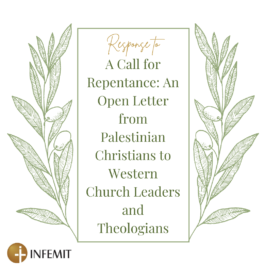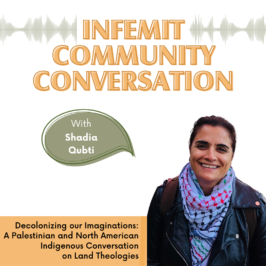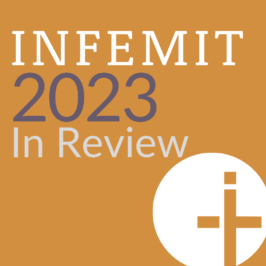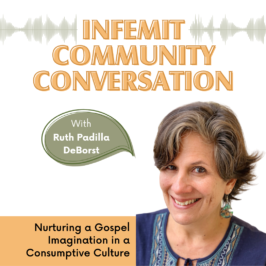English transcript
Greetings everyone, my name is Obed Manwatkar and I’m the adjunct professor of North Park Theological seminary and I’m very glad and thankful to the Lord, for INFEMIT for giving me an opportunity and I will be presenting about Reconciling East and West, Life and Legacy of ‘Mahatma’ Jotiba Phule and the Hope for OBCs in India. So, this is my research on and I’m presenting a powerpoint presentation so that would be easier for the audience to understand and if you have questions and queries please feel free to reach out to me. So: Reconciling East and West, Life and Legacy of ‘Mahatma’ Jotiba Phule and the Hope for OBCs in India.
So before we enter into the life and legacy of Phule, let’s have an overview of India- what India is. This is India map. We are around 28 plus states and seven Union territories This is about Hinduism. When we talk about Hinduism, so this is Hindu Godhead (Trimurti)-Brahma, the creator, Vishnu, the preserver, and Shiva, the destroyer. So the caste system in India is, how it’s, operated in this way. Look at that- the notion of the caste and the notion of the creation is this- that Brahma created the world and he created the priests, the Brahmins from his mouth. He created the warriors from his chest, the Kshatiryas, the caste, and he created the merchants, the Vaishya caste from his thighs, and then he created the servants from his feet. And below the four major workers, there are the Untouchables, they are outcast, the Dalits.
So Brahmins consist of three percent, Kshatriya (the warrior caste) three percent, Vaishyas, these are three percent. Brahmins, Kshatryiyas, and Vaishyas, almost like they are in minority population, and majority of the people, Shudras, slaves, the bonded laborers, or the ‘musclemen’ work, they are 52 percent, approximately and there are Tribals and untouchables and the other religions- they are 17 percent. India is a multilingual country and multi-, multireligious country. Majority of the world religions, they evolved from India. Early Christianity to Sufi Islam, or you can say Buddhism, Jainism, Sikhism, and a small small spawn of folk religions. So it’s a very very complex and the system is very very complex and so this is like a system of discrimination of the people of the same color. So this is not race. Caste is more more more more complex than races/ racism. So, this is what the structure is of India and majority of the Christian community comes from the Untouchables, the 16 percent of the population, and the Dalits and the Tribals. The church has worked in tribals and the Untouchables. What my research is on [are] these people- the 52% of the population. They are OBC’s- the government calls them Other Backward Caste. According to the caste system, they are Shudras.
So let me focus more. So these are four major Varnas. “Varna” “Varna means color. “Varna” is the Sanskrit word which means color. Each Varna has a corresponding color, so Brahmin is more whiter than red, the Kshatriyas (the warrior caste), the Vaishyas, and the Shudras, the slave. So this is called a Brahmanized system and in Bhagavad Gita, the scripture, the Brahmanical scripture, the Sanskrit scripture says, Krishna says, that “For the protection of the Religion of Caste, and for the destruction of sinners, and for the establishment of religion, I com into being from age to age.” “quotes in Sanskrit” that’s the Sanskrit phrase. So this is the key phrase to protect, to preserve the system- that you cannot change your caste, you cannot intermingle with one another. How does this system work? It’s on Dharma (the religion of caste). So practicing the caste, and each caste has his own deity, 330 millions of gods and goddesses every caste deity. Karma which is common phase now- it is a duty assigned by the religion of cast. Then a reincarnation, and it takes an Untouchable, a Dalit, to cross 800 million life cycles to become a Brahmin. That is a reincarnation theory, the rebirth- you have to be born again and again. Then restriction of marriage, food, and education- you cannot marry outside your caste, you cannot eat with them, you cannot, you don’t have any right if you’re Dalit or you’re Shudra, you are not allowed to get educated. This is the occupation based on birth, and notion is unequal- inequality is the soul. Notion is that we are all created unequal, and this god has created this- that’s [what] the Rig Veda says. And so, it keeps, the system keeps over a billion people in [an] oppressive state.
About India, I already told 28 states, 7 Union territories divided in basis of 800, 8,000 plus castes, and 34 million languages. So the scriptures. Manusmrti, manusmrti is a law book of Brahmanism, the system. Then Vedas, which is a creation story. Upanishads, which is like the holy spirit of with us and then Ramayana and Mahabharata the epic stories. Ramayana is about Rama killing Ravana and celebrating the Diwali thing and all. And then Mahabharata about Krishna- Krishna gives Krishna that is a war story. And Bhagavad-gita is the collection of the sermons of Krishna given to Arjuna- how to fight a battle, a war. And in Bhagavad-Gita, Krishna says that “I had created the caste system” and so basically there are nine – ten incarnations of Vishnu the second godhead, and Krishna is one of them and he is like i will come back and forth to preserve this system. There are two notions. So Sruti and Smiriti. Sruti is our revealed text in the scriptures, and Smriti is remembered. So Smriti to remember and Sruti to reveal. And it says that the Vedas are eternal, you cannot touch it you, you cannot. So it’s all there.
So what happens is, when Gospel comes to India in Kerala, India, Apostle Thomas we all know the person of Jesus Christ our Lord and Savior, he comes to India, in Kerala in South India, and he plants seven churches. And what he does is a Paulinian way, he approaches the Brahmins, the superior, the oppressive people who were taking the bath in the water and worshipping the sun, he gives them gospel, and that’s how four Brahmins come to the Lord and the church planting movement starts in India. So he plants seven churches and in Palayoor, Kokkamangalam, Kodungallur, Paravur, Niranam, Nilackal, and Quilon. Today the churches planted by Apostle Thomas are Mar Thoma and most of the Mar Thoma Syrian Church, they call themselves the original Christians of India and all are… So basically entire Christianity, the leadership is ruled by the Brahmins’ converts today, globally which are known. Those are primarily Kerala, mandalam speaking leadership. So be it any big shot leader of Christianity in India, they are all from upper caste Brahmin background.
How the caste system is- so Brahmins, Kshatriyas, Vaishyas, Slaves (Shudras), then tribals, untouchables, and other religions. So what does Brahmin do? Brahmin controls the scriptures religious rituals and that’s the beauty of caste of the Brahmin. Brahmin doesn’t work anywhere, so it is their duty in the caste. Kshatriyas are monarchs, the landowners, the fighters- the rajputs are warriors, so you can you can say kings. And Vaishya (the Baniya), the traders, the controller of the economy, the corporates, the industries, the bankers, the shopkeepers. They control the money. And these are the Shudras, they are potters, they’re gardener, they’re nai (they’re barbers), they’re carpenters, they are washers, they’re herdsmen, they’re sculptors, they’re all this hard-working agrarian community which consists of 60% of the population of these people. They are Shudras, they are they are being taught that their duty, the caste duty is to serve the top three ones- the Brahmin, the Kshatriyas, and the Vaishyas.
Now, there is one category called Untouchables, Achuts, they are called outcasts. They are Dalits. They are outside of the caste system. They are formally referred as to as Untouchable. Harijan was the given by Gandhi- who is a fake hero actually. He is a, he’s hero of decolonization but he is not the one whom you think he is. He was purely racist and purely casteist and church has done a biggest mistake of promoting or propagating Gandhi myth. And still four generations are suffering because of his legacy. So they are Dalit, the downtrodden, the oppressed, or the broken people. Among them, they are also subcaste which is manual scavenging (Bhangis) that is now considered as slur, but now they they are manual scavengers. The one cut particular caste group is assigned to do menial jobs of the community. They are basically the sanitation workers. So when a Brahmin cannot be a sanitation worker, neither a sanitation worker can become a priest. So this is now Indian caste system and Christian caste system. Indian caste system- Brahman, Kshatriya, Vaishya, Shudra, and Untouchable. The Christian caste system- Leaders, members, regular attenders, visitors, and unchurched people. So church is also practicing the notions of caste today and contextualization when we come upon… So Regunta Yesurathnam states that contextual theology is about indigenization or inculturation, but also seeks the realities of contemporary secularity, technology, and the struggle for human justice- which church has failed in terms of contextualizing. Church has been contextualizing with the Brahmins, the oppressive culture.
So Mahatma Phule, we come to Mahatma Jotiba. Mahatma Jotirao Phule comes from a vegetable vendor or gardener family. He is, he was from ‘Shudra Varna’ and Jotirao’s father and uncles were florists, so the family came to be known as “Phule,” Phule means flower. “Phule” comes from ‘फूल,’ ‘phool’ means flower in Hindi. So Jyotira’os mother passed away when he was nine months old due to poor financial condition at home. He had to stop studying at his early age. Jotiba’s aunt Sagunabai Kshirsagar who used to work in a Christian missionary’s houses and their schools and their institution and so she raised him and so, their Christian and Muslim neighbors persuaded his father to send him to the Christian school. See these people are not allowed to get education but what happens is- colonization is not good, but colonization came and it it opened the era of English education to the outcast and the Shudras.
So Jotirao Phule studied in a Scottish mission school founded by Christian missionaries. He completed his education in ’47. He married to Savitribai, his wife- she was the first female liberator of India. In 1848, they planted the first ever girls school in India on the first of January with four girls. And today we see women are becoming prime minister, women became becoming pilots, and all of Savitribai Phule, Mahatma Pule but no one talks about that today.
The transformation- He was at, how did he transform? He got angry at his caste system. He was, he had Brahmin friends, he was invited to a wedding and at the procession, he was kicked out of the procession of the wedding- that “you are a Shudra and this is Brahmin’s wedding, and why are you here?” And so he left the ceremony and made up his mind to challenge the prevailing caste system and social restrictions. He made his life’s work to hammer away the social majoritarian domination and aimed at emancipation of all human beings who were subjected to this social declaration.
What were the influences on him? Jotiba used to read the New Testament, the Gospel of Jesus Christ. This is another story- like some Christian missionaries gave New Testament to Savitribai, Phule’s wife, and she had to, and her parents said, “you have to throw away this book because Christians are converting you and they’re colonizing you,” but she didn’t throw away that New Testament, she hid that New Testament in her box and when she got married to Jotiba, she asked him, “can you teach me English so that I may read this New Testament, what’s written?” And when he taught her English, she read the New Testament, and that’s how the transformation began. Then Thomas Paine, one of the finest writers in that time, and who wrote the Rights of Men. Abraham Lincoln’s Emancipation Proclamation was worldwide. So Cynthia Farrar, he sees one of the women from Cynthia, who opened the first girls school in Maharashtra in 1827 but that was not considered the first girls’ school because missionaries were not accepted by the caste system, prevailing in the colonial rule. And Vastaad Lahuji Salve was a wrestler, who was his master who taught him wrestling, and a lot of life’s guidance.
So Jotiba made efforts for women’s liberation. First of all, Jyotiba thought, Jyotiba came to know that unless and until women is liberated, there cannot be any reformation. So in 1848, he founded first girls school. Then they opened more than 20 schools, indigenous schools for the lower caste, and because of that they had a lot of opposition of people. You can see the picture. In this picture, Savitribai Phule is walking with the books towards her school, and there, people are throwing stones on her, they are stoning her, they are throwing because she has she crossed the line- that woman should remain in the house courts, in household but she is not allowed to educate. At that time that was the notion that was culture-accepted majority but she challenged that and she, she didn’t stop just, she began and they succeeded in planting twenty schools. Jotiba realized the pathetic condition of widows too, and they, he opened a shelter home for widows. There was no system of remarriages of widows, and still it’s prevailing. Widows are not allowed to remarry in the caste system, once you are a widow. ‘Sati’ was a practice- that is a practice that if your woman becomes a widow she has to be burned alive in the husband’s funeral pyre, but that practice was stopped by the British government, with the efforts of Jotiba and a Christian missionary called William Carey before him. So at the same time, some girls often became widows before they even hit puberty, and were left without their family support. Jotiba and Savitribai made efforts, established shelter homes, and then adopted one of the baby of a widow and named him Yashwant. And Yashwant is like extra version of “Yēšū,” Jesus, Yeshua. From Yeshua it comes Yashwant, so he names him Yashwant, his adopted kid.
So his famous book, “Slavery,” was given to him by our friend Chhagan Bhujbal when Obama visited India a few years ago, and Obama read this book and he wrote a letter later that he is influenced by this book and amazing. Jotiba Phule’s Slavery, he dedicated it to the good people of the United States, the slave abolitionists who worked hard to dismantle, to help the Africans enslaved in the United States, to get out of slave prison. He discovered Jesus as Bali Raja, the Sacrificial King of India. I’ll come to that. And in his many books he urged peasants and proletariat to refuse to obey the restrictions imposed upon them.
And few of Jotiba’s Brahmin friends extended their support to make the movement successful. So he was not a Brahmin hater, he was [an] inclusive person. He was a Jesus following person- he didn’t go to the church which we call Christian land or get baptized, and no no no, he was Christian from his heart. He was [a] Christ-centered person but he, but the church wanted to judge- he said like, “oh the church is interested in winning the souls but there is no Indian church, there is no physical movement of social justice I see.” Till today, in 2000 years of history from the church, Indian church failed to produce a Martin Luther King Jr till today. Although they existed here, but church doesn’t own him.
Truth Seekers Society, which was founded by Mahatma Phule he founded the 24th of September, 1873. He founded one movement called Truth Seekers and the purpose was to eliminate the caste system. Savitribai Phule became the head of women’s section, and they opened their well for the untouchables because the untouchable Dalit caste were not allowed to drink water from the commonwealth. So Phule was like, “I will open my house and I will give you the water”- you know, like, it’s influence from Jesus- “I am the water of life.” So they solemnize intercast weddings too, even their son, adopted son Yashwant was married intercaste, outside of the caste and they themselves solemnized, they didn’t even allow Brahmins to do that. They themselves appointed priests from their own indigenous, oppressed community to become priest and they did.
He published a lot of works- about farmers, Cultivator’s Whipcord, he writes about farmers and today, farmers movement is active in India. Farmers are revolting, it’s a worldwide issue now. So Phule already wrote about farmers in 1800s, and their plight, so if you get the book, google it, you can get Cultivator’s Whipcord. He published two booklets in 1885 called “Satsaar” (the essence of truth) which was an open discussion about conversion, how and Pandita Ramabai, one of the famous South Asian Bible scholar, who translated the Bible in Hebrew, directly from Hebrew / Greek / Aramaic Bible, and translated the Bible in people’s language, in Marathi, and she was persecuted. Phule was the person who shielded her, dedicated books to her, and then he exposed the Brahmins, why they are opposing the conversion, so he stood and advocated for conversion to Christianity of Pandita Ramabai. So one of the classic books- it’s already there and everything. His last publication was “Sarvajanik Satya Dharma Pustak (Universal Religion of Truth).” He wrote it with his left hand because in his last days he was paralyzed from his right, so he used to write with his left hand. So he wrote Universal Religion of Truth which is working for the Monotheistic Christ-centered religion, a folk new religion basically. A new, a counter for the system, because church failed. Church was completely occupied and judged so completely by the Brahmins. So indeed, the irony of the decolonial era is, British came they when the Brahminical forces, which were more oppressive, they captured.
And so Phule was trying to make efforts to empower the more oppressed people in the colonial world, and so he discovers the identity of these people as Balijans as people of Bali Raja. He was cultivator, as well as a contractor. He was a rich man, he constructed a few buildings here. You see Mumbai’s VT station was constructed by him. And Pune is a bridge, and also these is the architecture he has done.
After Phule, Savitribai Phule carried on. And Yashwant Jotiba Phule eventually died when plague came up, serving the plague patients. There are so many women coming up – the impact. Tarabai Shinde, she was the first feminist writer of India – she’s the producer of this movement. Pandita Ramabai, first female Bible translator. TanujaBai Birje, first women journalist. Fatima Shaikh, a Muslim woman who joined Savitribai Phule’s and Jotiba Phule’s school to educate girls. Then it’s Mukta Salve, the young girl who wrote an awesome, powerful essay. She’s the first student of them, she’s the product of their school.
So what church does is – church doesn’t address the oral traditions which is redemptive for people – but church goes into the scriptures of Brahminical which are oppressive, and they contextualize the message with that. And so that’s the wrong of the church till today. This is one of the festival called Onam, and who is Bali raja? Onam festival is celebrated in Kerala and Bali Raja stories from north to south, there are different narratives but the story is the same, the story of redemption. The way Greeks were approached, Paul approached Greeks. Greeks were waiting for the Christos to come and Jews were waiting for a Messiah to come, so people of Bali Raja, the people of India, OBC’s of India, are waiting for the Bali Raja to come. So there is one festival called Onam.
There is a story that Vishnu takes incarnation of Vamana, a dwarf, and he asked Bali Raja for three steps and so he tricks him and he snatches his kingdom. But there is a story that once in a year, he is allowed to meet his people and greet his people, but whole year he is into the “Patala” which means south, he suppressed. “Patala” – it translates as hell, but it is not actual translation, it’s South. So he suppressed. Phule says that when Bali Raja was crushed into “patala,” (“Patala” means south and south of India is west) and Phule writes about him, that why Vamana is crushing Bali Raja under his feet- look at that- Joti the gardener asked to the Brahmin. That is the fifth avatar.
Okay so, Bali Raja to the south, he went to the south, means south of India and globally, we see Phule related that he didn’t die. Phule says he went to the west, he liberated the oppressed there. He was crucified and resurrected, and when his people come to you, embrace them as his brothers and sisters. That means he’s talking about Christian missionaries, and the Christian missionaries will come and help you to get out of this system with the Gospel of Jesus Christ. So the church relates the contextualization methodology with the Brahmanization which is a written tradition, which is promoting exclusion, and the oral tradition, which promotes inclusion and hope and redemption, [the] church is completely out of focus of that.
So this is what Phule comes up with the oral tradition view, and fully writes in his book slavery, “The Universal Creator of us all and our universal father, the Almighty God- so ordained that the sacred knowledge of the Truth and human rights that he generously bestowed on us all should be enjoyed by us all in amity and harmony. To translate this desire of the Almighty into Reality, Baliraja, Jesus, the champion of the oppressed, the Holy, the repository of the wisdom, and who always spoke the Truth-manifested himself on this earth and after a few years, He undertook the great mission of emancipating his depressed, oppressed, and weak brethren from the trammels of the church’s wicked and cunning ensnarers, the Bhats, the Brahmins, and strove to establish the kingdom of God in this land of ours.”
That is the hope – the best hope is: Jesus says, “I will build my church, and the gates of Hades shall not prevail against it.” At the feet of the cross when we share our pain, our dreams come alive. Jesus Christ is not finished yet. He is still working. So de-brahmanize before you decolonize. That’s what the hope of Phule is. And so may Lord God bless you. Questions and queries are welcome. Thank you so much.






Leave a Reply